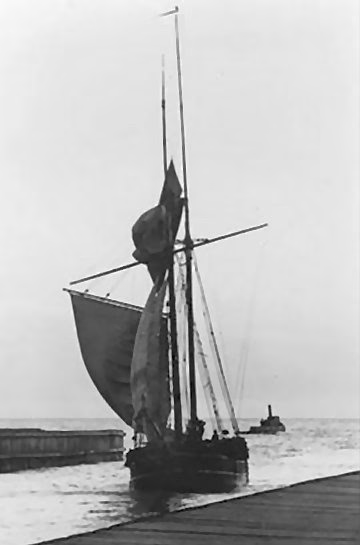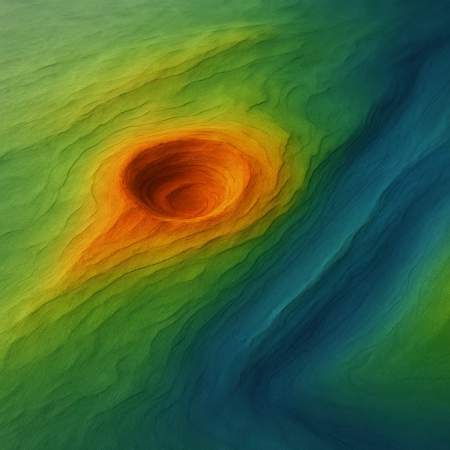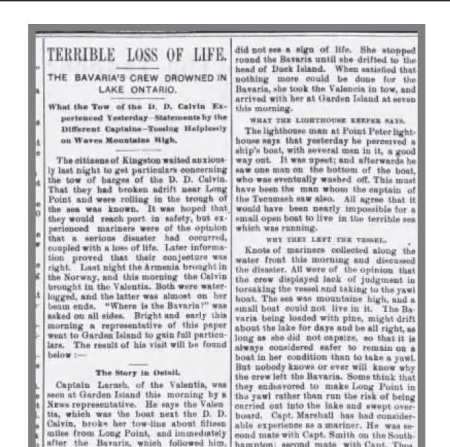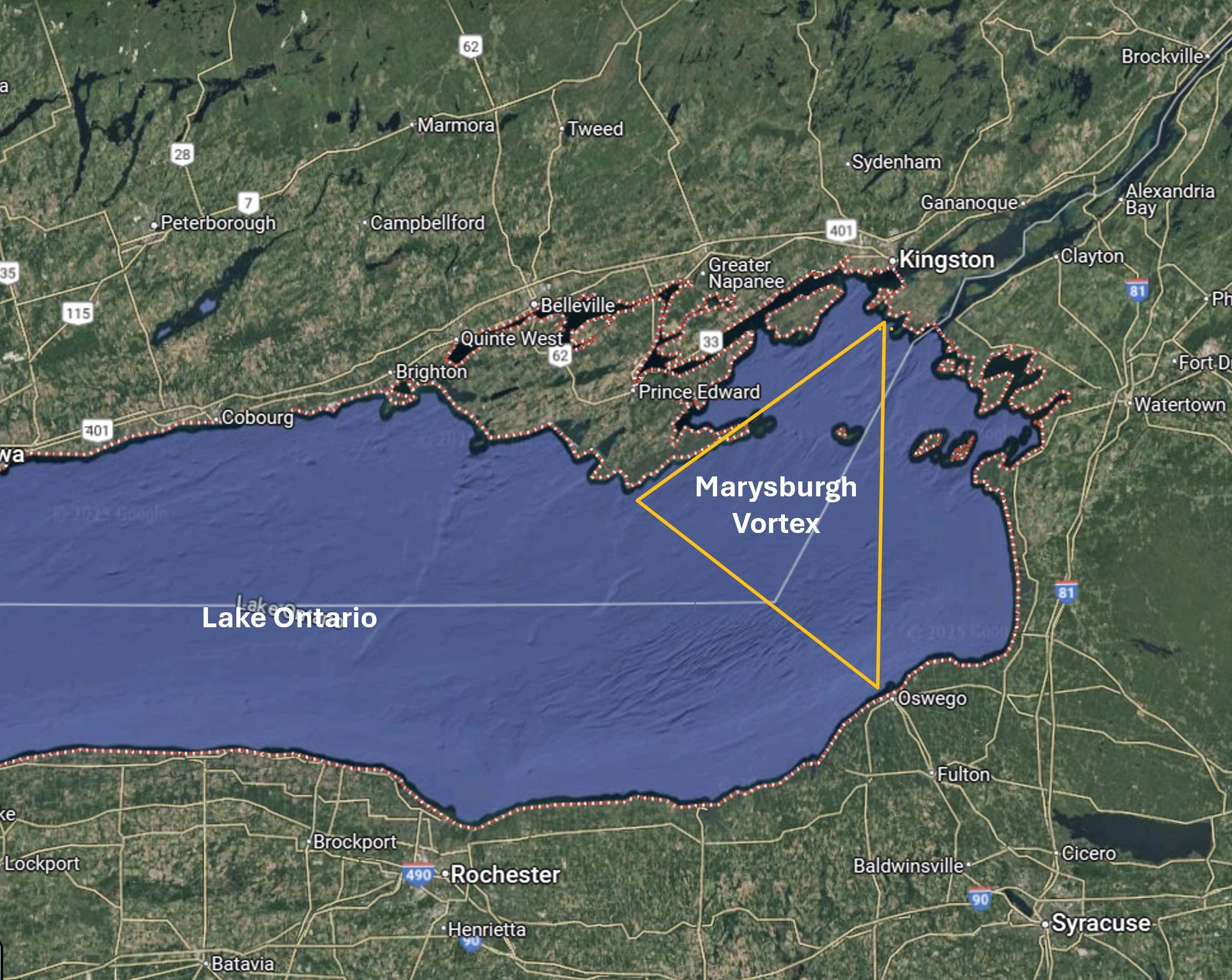In 1889, the schooner Bavaria was found intact, but its crew had vanished. Dive into the eerie mystery of Lake Ontario’s Marysburgh Vortex.
Image: Google Maps
May 1889: The Great Lakes schooner, Bavaria, lay quietly aground, upright and undamaged, as if it had docked itself with purpose. Inside, everything was in perfect order. A pan of bread sat cooling in the oven. A can of tomatoes had been freshly opened on the galley counter. The captain’s bed was neatly made, his personal effects untouched. Life preservers were still on deck, and there was no sign of struggle, water damage, or distress. But there was one glaring, chilling absence: not a single member of the eight-man crew was anywhere to be found.
You’ve Heard of the Bermuda Triangle… But Have You Heard of the Marysburgh Vortex?
You’ve probably heard of the Bermuda Triangle. Maybe even the so-called Lake Michigan Triangle. But there’s another little-known Great Lakes mystery, one where schooners vanish, compasses falter, and planes fall from the sky. Tucked into the eastern waters of Lake Ontario lies a stretch of water known by divers, sailors, and storytellers alike as the Marysburgh Vortex.
Perhaps the most famous incident surrounds the mystery of the Bavaria.
A Ship Called Bavaria
It was May 28, 1889. The Bavaria, a sturdy, three-masted timber schooner, was being towed across Lake Ontario in the company of two other ships by the steam barge Calvin. A powerful storm lashed the lake, but this wasn’t the Bavaria’s first tempest. She’d weathered rough waters before. She was built for it.
Then the tow line snapped.
In the confusion, Bavaria briefly collided with another ship in the convoy. No major damage was done. Still, when Calvin circled back to assist, the Bavaria appeared eerily empty. No one responded. No one was visible.
When the schooner was finally found aground on Galloo Island, she was upright and undamaged, her deck secured and her interior undisturbed—signs of a crew that had left in haste, not in panic. Bread remained in the oven, a meal half-prepared, and the captain’s quarters looked ready for a night never taken.
And yet, not a soul remained. The entire eight-man crew, including Captain John Marshall, had vanished.
Nearby, the ship’s lifeboat was found upside down, floating a few hundred feet offshore. Witnesses reported seeing men rowing in the storm, trying to reach land, only to be swallowed by the waves.
Official inquiries concluded that the Bavaria was seaworthy. There was no reason to abandon ship. No evidence of panic, mutiny, or sabotage. And no bodies were ever recovered.

The Vortex of Vanishing
The Bavaria is not alone.
The area where she vanished lies within what has become known as the Marysburgh Vortex, a region defined by a triangle between Wolfe Island near Kingston, Point Petre in Ontario’s Prince Edward County, and Mexico Bay off the coast of Oswego, New York.
It has been called “The Graveyard of Lake Ontario.”
Over 270 ships, some say as many as 500, have sunk in this stretch of water. And at least 40 aircraft have disappeared or crashed here.
Storms, Stones, and Stories
Why this region? Is it cursed? Is it magnetic? Is it simply misunderstood?
Theories abound. Some point to geography. The eastern end of Lake Ontario is dotted with reefs, rocky islands, and the treacherous Duck-Galloo Ridge. Sudden storms sweep in with little warning. Magnetic anomalies, particularly around the mysterious underwater structure known as Charity Shoal, may confuse compass readings and disrupt navigation.
Charity Shoal, a nearly circular underwater structure, is believed to be the remnant of a 460-million-year-old meteorite impact. Just 25 feet below the lake’s surface and spanning roughly one kilometer in diameter, the shoal has long been associated with erratic magnetic behavior. Mariners have reported compass readings drifting by as much as 20 to 27 degrees in its vicinity, making navigation hazardous, especially in poor visibility or stormy conditions. Geological surveys confirm a strong negative magnetic anomaly at the site, lending support to the impact theory and reinforcing Charity Shoal’s reputation as a key contributor to the region’s maritime mysteries.
While the meteorite impact at Charity Shoal is a significant source of magnetic disruption in eastern Lake Ontario, scientists have also identified other natural causes. Geological faulting beneath the lake, particularly along west-east trending shear zones with magnetically active rocks, contributes to the formation of localized magnetic highs and lows. Variations in lakebed sediments, particularly iron-rich deposits, also affect magnetic readings. Together, these factors create a complex magnetic environment that continues to challenge mariners navigating the region.

Hugh F. Cochrane’s 1980 book, Gateway to Oblivion, gave the area its now-popular name and floated the idea of supernatural forces. Local folklore keeps the fires stoked, whispers of ghost ships, strange lights, and dead radios in calm weather.
However, the scientific consensus leans toward natural explanations, including unpredictable weather, hazardous waters, and human error.
With 270 documented shipwrecks in the area and 40 aircraft lost in the region, these numbers make the Marysburgh Vortex one of the most hazardous areas for navigation on the Great Lakes, with a far higher concentration of shipwrecks and plane crashes than found in other infamous locations like the Bermuda Triangle.
Back to the Bavaria
And so we return to that quiet schooner on Galloo Island. The bread in the oven. The lifeboat capsized. The dry bed. What we know is the crew abandoned ship for reasons unknown.

If we apply Occam’s Razor, the idea that the simplest explanation is usually the correct one, we might conclude that the crew panicked. Perhaps a man fell overboard, and the rest launched a rescue that turned out to be a fatal mistake. Or they feared the ship was sinking and abandoned her for the lifeboat, only to be overcome by waves.
But then again, these were seasoned sailors. The Bavaria was built of timber, buoyant and resilient. She wasn’t taking on water. The cabin was orderly. They had every reason to stay aboard.
Despite the scientific and rational reasoning, the eerie feeling persists that the lake didn’t take the ship, only the men. These are the mysteries that tickle our sense of the uncanny, where logic falters and legend lingers just beneath the surface.
The schooner endured. The men did not. And Lake Ontario, as always, kept its silence.
Sources
Wikipedia – Marysburgh vortex
Intro to Global Studies – The Great Lakes and the mystery of the Marysburgh Vortex
Global News – Inside Lake Ontario’s ‘Bermuda Triangle’
Haunted Walk – Lake Ontario’s Marysburgh Vortex
Lake Ontario Chronicle – The Mysterious Marysburgh Vortex
Astonishing Legends – The Marysburgh Vortex





 8123 Main St Suite 200 Dexter, MI 48130
8123 Main St Suite 200 Dexter, MI 48130


